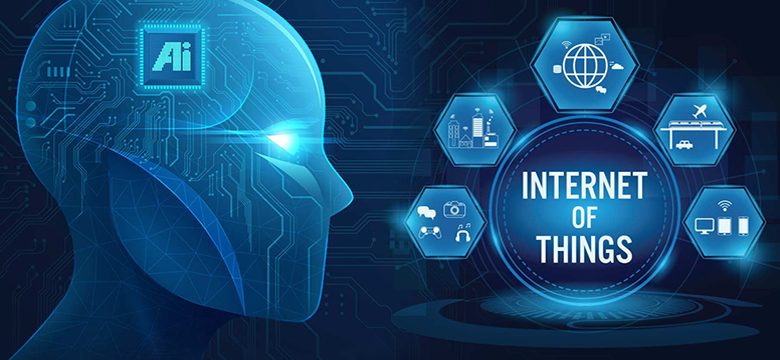The Future of IoT Security in a Hyper-Connected World

The Rise of IoT Devices
The Internet of Things (IoT) is not just a futuristic concept; it is a present reality transforming our daily lives profoundly. IoT refers to a broad and intricate network of physical devices interconnected through the internet. These devices, ranging from smart home gadgets and wearable fitness trackers to robust industrial machines, operate in tandem to gather and share data seamlessly. This hyper-connectivity offers immense convenience and efficiency, leading to increased automation in various sectors. As IoT expands, ensuring these devices are secure from cyber threats becomes a critical priority for developers and consumers.
The attractiveness of IoT lies in its capacity to make life more convenient and businesses more efficient. Yet, every IoT device intrinsically increases the attack surface for malicious entities looking to exploit these connections. Whether it’s a connected fridge in a smart home or a sensor in an industrial control system, safeguarding such devices cannot be overstated. Establishing robust security measures from the outset is paramount to mitigate potential risks associated with these innovations.
Understanding IoT Vulnerabilities
IoT devices offer numerous advantages but also present distinct vulnerabilities that require comprehensive understanding and management. . Many IoT devices are designed with cost-efficiency and convenience in mind, which often leads to a trade-off in security features. Common vulnerabilities include weak default passwords that users do not change, lack of regular updates, and outdated hardware that needs more security patches. Such vulnerabilities can be easily exploited, as cybercriminals continuously seek out weak points in these networks. Cybersecurity experts argue that most security breaches within IoT frameworks occur due to these overlooked or unimplemented security areas. The challenge lies in balancing stringent security measures with user-friendly experience and cost-effectiveness, all while maintaining the functionality that makes IoT devices attractive in the first place.
Data Privacy Concerns
The rise of IoT also brings significant data privacy concerns. IoT devices constantly gather colossal amounts of data, some of which are deeply personal, like health statistics or daily habits, as well as critical business data. This data is invaluable for enhancing services and innovating new applications, yet it can pose significant privacy risks if mishandled. These regulations ensure that organizations handling data prioritize user consent and transparency regarding data collection, usage, and storage practices.
While regulatory measures are essential, they are sometimes seen as slow to adapt to the ever-evolving technological landscape. Consequently, there is a pressing need for IoT devices and systems themselves to incorporate stronger privacy protections by design. As IoT continues to embed itself into everyday life, maintaining transparency about data usage and reinforcing privacy protections become vital components in building consumer trust.
Adapting to New Security Regulations
As IoT technology evolves, so do the regulatory frameworks designed to govern its security and usage. Regulatory adaptations are paramount to protecting devices and the sensitive data they handle. Currently, policymakers and industry leaders are concerted in establishing global standards in IoT security, emphasizing the need for consistent security measures across different regions. According to industry leaders, uniform security protocols are essential to preventing a fragmented security landscape that could otherwise be exploited by cybercriminals transcending geographical boundaries.
The dynamic nature of IoT requires organizations to be agile and adapt quickly to new regulations. Companies must stay informed about impending regulatory changes and ensure compliance to safeguard their IoT networks effectively. This proactive approach not only aids in compliance but fosters a robust security posture that reinforces consumer confidence in using IoT technologies.
Implementing Strong Security Protocols
Organizations and individuals using IoT devices must implement comprehensive security protocols to mitigate security risks. This involves several steps, from network segmentation to advanced encryption. By segmenting networks, businesses can isolate IoT devices from critical systems, reducing the likelihood of widespread breaches. Regular software updates and patches are imperative, as they address vulnerabilities discovered post-deployment and ensure continuous protection.
Encryption is pivotal in securing the data flowing through and from IoT devices. By employing advanced encryption standards, data can be safeguarded across its lifecycle, minimizing the risk of exposure even if intercepted. Additionally, educating consumers and employees about best practices for security can significantly strengthen protection frameworks. Knowledgeable users are likelier to spot suspicious activity and take appropriate measures to safeguard their information.
Future Trends in IoT Security
As the landscape of IoT security continues to evolve, several future trends are emerging. Artificial intelligence and machine learning are at the forefront, driving the development of intelligent threat detection systems. These systems are designed to identify and respond to potential threats in real time, providing a proactive approach to security. Furthermore, as cyber threats become increasingly sophisticated, the importance of collaborative approaches in cybersecurity education becomes apparent.
Industry experts predict an increased focus on zero-trust models, emphasizing the importance of continually verifying device identities and permissions. Additionally, blockchain technology offers potential advancements in IoT security by providing decentralized security features that could prevent tampering and unauthorized access. As these trends gain traction, they promise to shape the future of IoT security, ensuring it remains robust and effective in the face of evolving threats.
The Role of Consumers in IoT Security
Finally, consumers play a central role in securing IoT networks. Individuals can protect themselves from unauthorized access by prioritizing cybersecurity practices within their usage. Simple steps, such as configuring strong, unique passwords for each device and being mindful of the data shared with IoT systems, can mitigate risks significantly. Additionally, staying informed about product security updates and understanding the privacy policies of devices can empower consumers to make safer choices.
Education and awareness are crucial in fostering a culture where security and privacy are given precedence. As IoT advances, promoting digital literacy and security-conscious behaviors among consumers will be essential for creating a secure and resilient connected world.